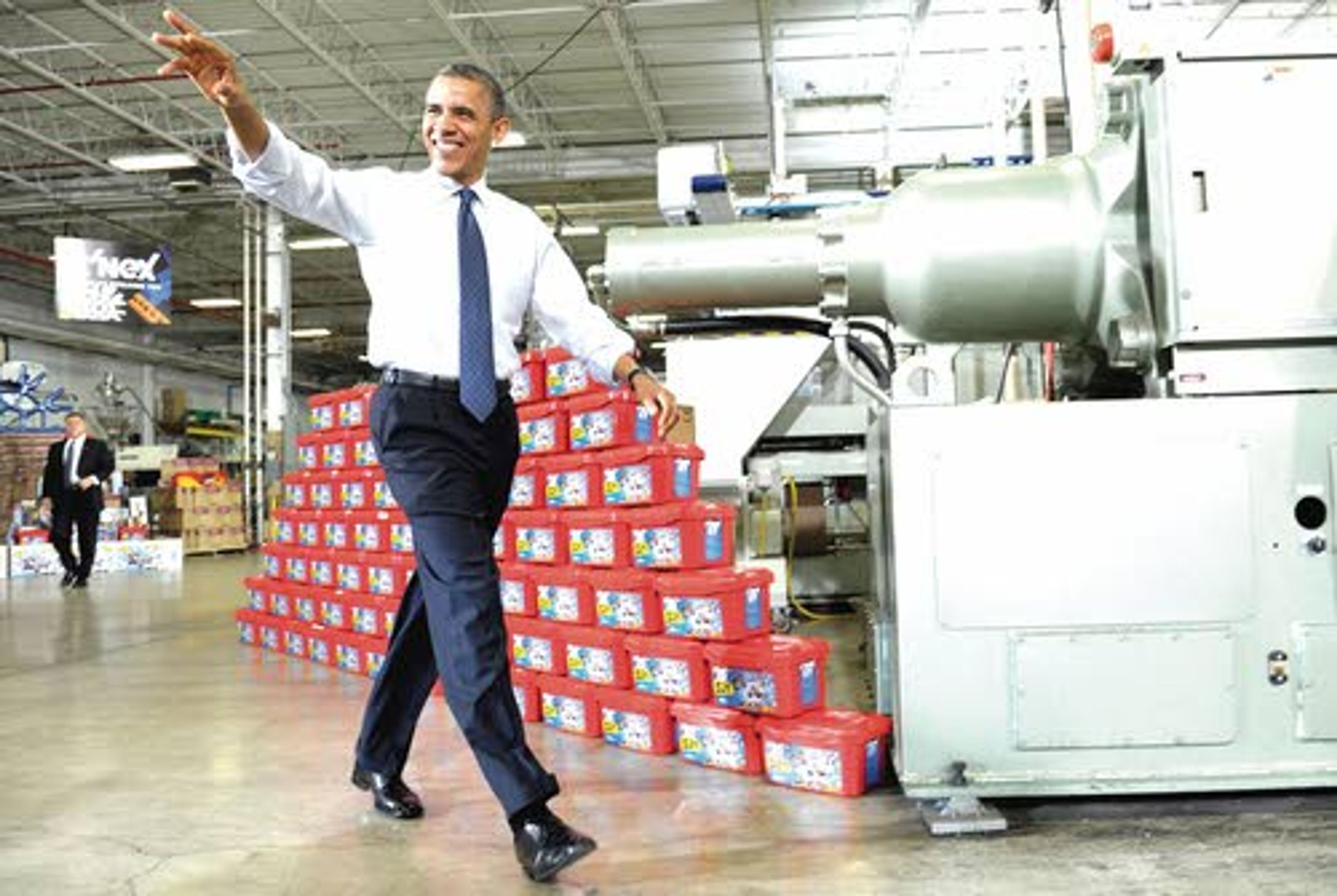U.S. manufacturing on the rebound
Administration’s goal of doubling exports by 2015 now seems possible
WASHINGTON — Suddenly, outsourcing is on the way out and insourcing on the way in as the U.S. trudges unevenly toward President Barack Obama’s goal of doubling American exports around the world by the start of 2015.
So far, export levels are about halfway to his mark.
Obama set the five-year target in his January 2010 State of the Union address and recently has hastened his drumbeat, telling his export advisory council last month the nation was “well on our way” to his goal. “The question now becomes: How do we sustain this momentum?”
While economists and industry leaders generally expect the ambitious target to be missed, impressive gains already booked in American manufacturing and exporting suggest such a miss may not be by that much.
Why the optimism toward a manufacturing comeback? Here are five reasons:
l Cheap U.S. natural gas and other increased energy production are helping to power U.S. factories more efficiently, with gas especially providing inexpensive raw materials for U.S. manufacturers of plastics, tires, certain pharmaceuticals and other petrochemical products.
l Higher wages in China and other foreign export markets are making outsourcing less profitable to U.S. firms.
l Congressional approval in 2011 of trade agreements with South Korea, Colombia and Panama and other agreements being negotiated now with Asia and Europe are promising to open more foreign markets to U.S. products.
l High U.S. unemployment is relieving pressure on factory owners to increase wages, helping to make U.S. labor costs more globally competitive.
l Major technology advances have steadily boosted factory efficiency and worker productivity.
Yet while many industries are doing more with fewer workers, more than half a million new manufacturing jobs have been added in just the past few years.
Of course, some big bumps lie in the road. Europe is mired in recession, the American economy continues to expand at a snail’s pace and the jobless rate sits at a stubbornly high 7.7 percent almost four years after the 2007-09 recession ended.
In fresh signs that the global economy remains shaky — and challenging for U.S. exporters — leaders of central banks in Japan and the European Union signaled Thursday they were taking or preparing to take more aggressive steps to stimulate economic growth in their regions.
The Bank of Japan said it would pump money into the Japanese financial system to help pull the world’s third-largest economy out of its prolonged slump. And the head of the European Central Bank, Mario Draghi, said the bank was considering a range of fresh options to stimulate growth.
The outlook was a bit brighter in the U.S.
Obama’s starting point was 2009 exports of $1.57 trillion. Since then, they’ve climbed to a record $2.19 trillion in 2012 — about 48 percent toward his goal of about $3.14 trillion a year by the start of 2015.
But 2012 exports, while a record, grew just 5.5 percent from those in 2011, down from a 15.9 percent surge from 2010 to 2011. The rate would have to pick up sharply again this year and next to meet Obama’s target.
“Some of the headwinds we faced last year have started to improve,” said Chad Moutay, chief economist for the National Association of Manufacturers. “And I think energy is a game-changer. We definitely have increased the competitiveness of U.S. manufacturing.”
U.S. manufacturers posted a fourth consecutive month of expansion in March. While the rate was a bit below February’s gain, the overall trend is still up.
Some critics argue that Obama set the bar artificially low by using recessionary 2009 numbers as his starting point.
Alan Tonelson, an official with the U.S. Business and Industry Council, said Obama also “has the wrong goal” by focusing on exports and not the other part of the trade equation: still-huge import levels and resulting trade deficits.
The U.S. imported $540.4 billion more in goods and services last year than it exported, down only slightly from the $559.9 billion trade deficit in 2011.
“We racked up a pretty impressive export performance over the last few years. But the main reason that we may not reach the Obama doubling-export goal is the world economy is slowing down,” said Tonelson, whose organization represents nearly 2,000 mainly family-owned U.S. manufacturing companies.
Obama shrugs off such skepticism, suggesting the recent manufacturing gains speak for themselves.
“What’s happening here is happening all around the country,” the president said during a recent visit to a flourishing engine-part factory in Ashville, N.C. “Just as it’s becoming more and more expensive to do business in places like China, America is getting more competitive.”
Federal legislative “Buy America” restrictions on certain recent government contracts — considered protectionist by many economists — are also being credited with helping to spur some recent U.S. manufacturing gains.
The U.S. now makes about 18 percent of the world’s goods, down from nearly 40 percent right after World War II. Clearly, many manufacturing jobs will never come back.









